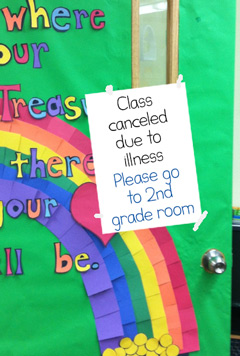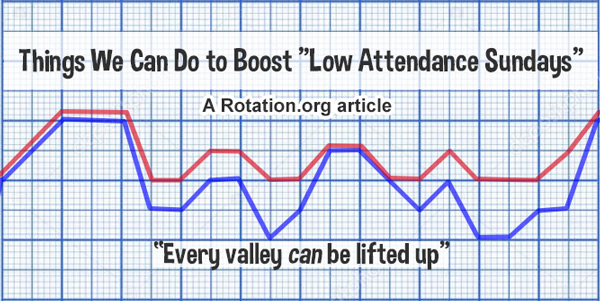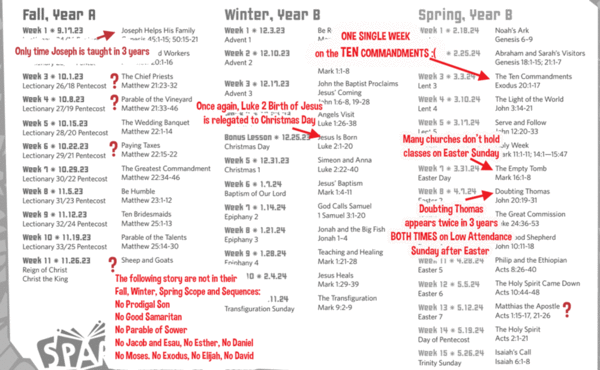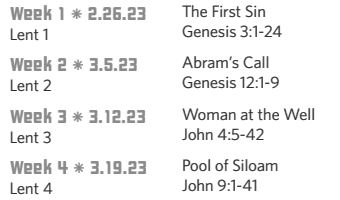
Sensory Overload, Social Anxiety, and Introverts
How not to push away a third to half of our kids and parents
Thoughts, definitions, and ideas from Neil MacQueen
In "the old days," we could unwittingly ignore or excuse a percentage of our kids and parents as "low participation," back-pew," and "unengaged" members. We could do it because 50% attendance looked very good back when we had bigger rolls. Sure, we occasionally cajoled the 30% who weren't engaging the way we wanted them to, but if we're being honest about the past, most of our efforts went toward the ones who were engaging in the ways we wanted (please note my confessional tone). We created worship experiences, events, groups, schedules, and styles of engagement that worked for 70% of the people -- for the extroverts leading those events, and for the congregational leaders who wanted to see "numbers."
Now by the grace or judgment of God, we have to do better, especially in churches where "doing better" will now be the difference between vitality and mortality. We also need to do better with the 30 percenters because it is the RIGHT thing to do -- and we have a better understanding of issue. And for me, the issue of "the 30 percenters" also hits close to home.
Who are "the 30%" I'm talking about?
The "30 percenters" are the cumulative percentage of the population that has some form of:
- social anxiety disorder
- sensory input issues
- or they are simply introverts**
--or combinations thereof, that make participating in church problematic for them, and for us.
In brief: As many as 1 out of every 3 of your church members and their kids have needs that may be being hurt by your church's outgoing, extroverted, a-little-bit-too-exciting, and loud offerings. (Like we needed to figure out more reasons why some people don't go to church.)
According to various health stats, 30% could be a little low due to under-reporting or how you define the issue. But no matter how you define it, we're talking about a lot of people.
And we're not just talking about the people already on our rolls. We're talking about upwards of one-third of the population whose needs are not being addressed by the average congregation.
**Being an introvert is not a disorder, but it does make it more challenging for some to feel comfortable in gatherings, particularly those geared toward and run by extroverts. Read on.
Let's break that down and then look at some ways "the church" can help
"the 30%."
1. Social anxiety disorder
According to the NIH, 12% of the population has clinical social anxiety disorder. The numbers are higher among certain (younger) age groups, and it is estimated that this issue is way under-reported. The official 12% estimate does not include the less than clinical forms of anxiety brought on by stress, depression, and physical ailments that people deal with from time to time. Together, we could be talking about 20% of our church members at any given time, and 20% of the people we are hoping will join our church.

Social anxiety disorder can make a person feel physically and/or psychologically un-well when they think about, travel to, and attend social events -- or are called on to participate in such gatherings if they do get there. They tend to prefer smaller groups, familiar surroundings and people, and comfortable, quieter, and safer feeling settings. Knowing what's going to happen, not having any sensory triggers to deal with (like loud music), and having something that helps them cope (like food or their favorite toy), can help control their anxiety, but it's still there. For those who don't have the disorder, it's hard to imagine how disabling it can be, but for those who do have it, it's no only a problem, it can become a fear that keeps you home.
Put lightly, "going to church" is not fun or uplifting for many people, including many children. It's a gauntlet -- if they ever make it from their door to ours, which increasingly, they are not. And even when they do make it to the door, their reasons for NOT wanting to be there are primed long before the loud music and long sermon take over.
2. Sensory input issues
Various studies estimate that up to 16.5% of the population has some form of "sensory input" disorder. This can run the spectrum of being sensitive to noise, commotion, cacophony, bright or moving lights, large crowds, loud music, or jarring voices. These sensory triggers can cause anxiety, imbalance, a feeling of being physically ill, sweating, hyperactivity, withdrawal, and "flight" responses.
As we know, many people with some level of autism and/or Attention Deficit or Hyperactivity disorder can ALSO experience sensory input issues, but anyone can have sensory input issues all on their own.
 As you can imagine, attending today's church is especially challenging for anyone with a sensory input issue. It makes them disinclined to want to go, and more likely to appear uncomfortable (or unfriendly) when you see them. They are likely to "sit in the back" and leave as soon as possible. They are more likely to say "I'll think about it" or "I'm busy" when you ask them to do something.
As you can imagine, attending today's church is especially challenging for anyone with a sensory input issue. It makes them disinclined to want to go, and more likely to appear uncomfortable (or unfriendly) when you see them. They are likely to "sit in the back" and leave as soon as possible. They are more likely to say "I'll think about it" or "I'm busy" when you ask them to do something.
I know quite a bit about "sensory input disorder" because three of my extended family members struggle with this issue -- and none of them are autistic or hyperactive. In fact, they are otherwise so bright and well-adjusted that you'd probably never guess they feel uncomfortable sitting next to you in church. In our family, we call it "the gene" because their grandmother had it, too. One interesting thing about having a "sensory input" issue is that it can also produce social anxiety and turn you into an introvert (whether you already were or not). I've seen it in action.
It has also affected the "style" of church we attend. As much as we enjoy contemporary-sounding music and church bands, the "loudness" makes some in our family feel anxious and uncomfortable, so we can't go to those types of churches. This is true of traditional music too, by the way, and crowds, and feeling packed in -- all of which sound like the church I grew up in and loved.
3. Introverts
*Being an introvert is not a disorder, it's simply a personality trait, often inherited, and frequently celebrated in the Bible.
Between 25 and 40% of the population primarily leans "introverted" (stats and signs), though most people haveBOTH introverted and extroverted needs and capabilities.
Being introverted means a person tends not to seek out social or "group" situations or derive a primary sense of well-being from participating in them. They may function just fine in them, but prefer being by themselves, or with one or two familiar people. Introspection and alone time is what charges their batteries.

Introverts don't necessarily feel anxious about "extroverted" events, but often they don't participate in their energy, seek out such experiences, or respond to extroverted leaders. They are not "sad," or "withdrawn," or "in their own world." In fact, many introverts are just as engaging as an extrovert. They just tend to prefer quieter, more contemplative opportunities.
I wonder how many introverts feel like fish out of water at church? Or worse: they are made to feel spiritually "less than" in worship and a church that is geared for and led by extroverts?
 I wonder if our Sunday School atmosphere and activities can be designed to appeal to both extroverts and introverts -- nurturing both outward participation and expression and inward contemplation? I think the Rotation Model's variety of workshops certainly helps give us that opportunity for variety, but we could do better with the balance of energies and tone.
I wonder if our Sunday School atmosphere and activities can be designed to appeal to both extroverts and introverts -- nurturing both outward participation and expression and inward contemplation? I think the Rotation Model's variety of workshops certainly helps give us that opportunity for variety, but we could do better with the balance of energies and tone.
I wonder how we can train our teachers to make sure they aren't excluding the 30% by the way they conduct class and interact with the kids?
BTW: "Extroverts" can have social anxiety too. (article) The very thing they seek can also create anxiousness and cause them to walk away or seek out other experiences. What some may describe as "burn out" may actually be unresolved anxiety created by a lack of balance and an under-nourished inner-life.
[4. Depression and "Worriers"]
[According to experts, one in twelve people suffer a major depression event in any given year, and one in fifty suffer from ongoing depression disorders that disable their social lives. And according to a recent study from Baylor, 17% of the population are "worriers" (anxious) are much less likely to join a church or attend if they do. Keep in mind that when the parent is the one with depression or clinical worrying, an entire family's participation can be affected.]
[I did not include depression or "worriers" in "the 30 percent" but could easily have done so. In addition to pastoral care and education, many of the suggestions below can help those with depression and "worrying" (anxiety) feel welcome and connected in the church.]
What the church can do to help:
Here's a "starter discussion" list of things that can help those with social anxiety and sensory input issues and those who happen to be introverts. It doesn't address other health issues that might get in the way of participation, so feel free to add those if you wish. I've included some suggestions for both kids and adults, worship and classrooms.
Feel free to add your comments by replying!
- Embrace diversity and don't accidentally shame or push away those who need to participate in ways that are different.
- Stop the subliminal and not-so-subtle messaging that tells them "you need to be here to be a member." Christ's body is not your building or attendance chart. Learn how to be with them.
- Don't count heads, count hearts.
- Turn down the volume, literally, and figuratively, too. Don't do things that make people more anxious.
- Don't create a light show; in fact, turn down the lights from time to time.
- Create space, don't crowd people.
- In worship and classrooms, don't do things like play music during the prayers or have music blaring when people arrive.
- Lead prayers quietly and contemplatively. Add breathing space.
- Don't pressure or shame people to "sit up front" or participate in every activity. Let them sit in the back row or sit it out if they need to.
- Let children "go up front" with a parent or not go up front at all until they are ready.
- Work with parents to have a less anxious experience of preparing to go to church.
- Don't funnel everyone through a busy door or into a large congregating area; provide alternative points of entry.
- Revise your "energetic" "get the kids moving" approach to worship and fellowship to offer more balance and encourage 30 percenters to participate.
- Have more comfortable seating in worship and classrooms, including chairs with arms (which give many a sense of protection and balance).
- Create "side rooms" in worship space for those who need them.
- Organize and advertise "quieter and chill" events and services -- and notice who comes to them.
- Hold studies, worship, and committee meetings on Zoom for those who don't always feel comfortable attending but want to participate.
- If your worship service is energetic and loud, offer a quieter "unplugged" version from time to time.
- Create cozy sitting areas around the periphery of busy areas (slightly away from intense fellowship zones).
- Make sure you offer events and group experiences and sizes that are "cozy" without feeling "closed in."
- Provide for more contemplative opportunities, including quiet times in worship, fellowship, and the classroom.
- Slow down your pace of leadership and talking, don't be in a hurry.
- Take it outside more and into nature -- God's original anxiety buster.
- Let your humor flow, it's a great anxiety buster.
- As a leader, learn to identify and speak gently to those who might find your energy and enthusiasm more "noise" than help.
- Realize that some people become more introverted due to their health or life circumstances and will need different ways to connect.
- Reach out to "the 30%" outside of events so that they feel comfortable with you and heard.
- Know who their friends and "calming presences" are in their family and congregation and ask those friends and family members to make a special effort to help and keep an eye on our"30% friends."
- ASK those you know who have input and anxieties what works for THEM.
- Ask "the 30%" to minister to each other and keep an eye out for others.
- Visit them in THEIR element.
- Raise mental health awareness and invite experts to education the congregation.
- Investigate starting support groups.
- Embrace Christ's message of hope. Beating the political and cultural drums makes many people more anxious and depressed.
- Embrace a little bit of introversion, sensory-underload, and stress-reduction in your own life, then let it rub off on others.
- YOUR GREAT IDEA HERE
In a former church, they put a comfortable chair with arms in the sanctuary for a family member with a stressed-induced balance issue. She immediately asked for it to be put in the back near a wall so it wouldn't stand out. (People with needs don't like to appear needy.) When some other members saw it, they asked for chairs like that too! In that church, we also had an "overflow" side room that looked out onto the worship service through a door. We soon discovered that even when there were plenty of empty chairs in the main room, there was always a group of people who felt more comfortable in that side room.
I look forward to your thoughts...

Neil is a PCUSA minister specializing in Christian education. He is also one of the founders of the Rotation Model and this site.
There are many good resources on these issues, including advice and practices for churches. Here are a few of note:


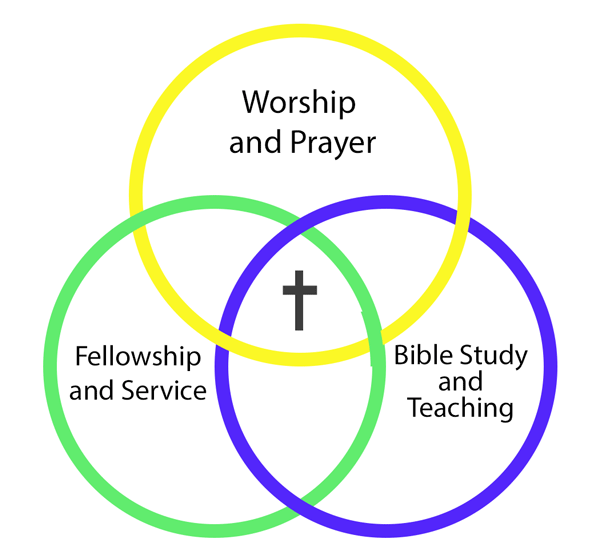















 As you can imagine, attending today's church is especially challenging for anyone with a sensory input issue. It makes them disinclined to want to go, and more likely to appear uncomfortable (or unfriendly) when you see them. They are likely to "sit in the back" and leave as soon as possible. They are more likely to say "I'll think about it" or "I'm busy" when you ask them to do something.
As you can imagine, attending today's church is especially challenging for anyone with a sensory input issue. It makes them disinclined to want to go, and more likely to appear uncomfortable (or unfriendly) when you see them. They are likely to "sit in the back" and leave as soon as possible. They are more likely to say "I'll think about it" or "I'm busy" when you ask them to do something.
 I wonder if our Sunday School atmosphere and activities can be designed to appeal to both extroverts and introverts -- nurturing both outward participation and expression and inward contemplation? I think the Rotation Model's variety of workshops certainly helps give us that opportunity for variety, but we could do better with the balance of energies and tone.
I wonder if our Sunday School atmosphere and activities can be designed to appeal to both extroverts and introverts -- nurturing both outward participation and expression and inward contemplation? I think the Rotation Model's variety of workshops certainly helps give us that opportunity for variety, but we could do better with the balance of energies and tone.






